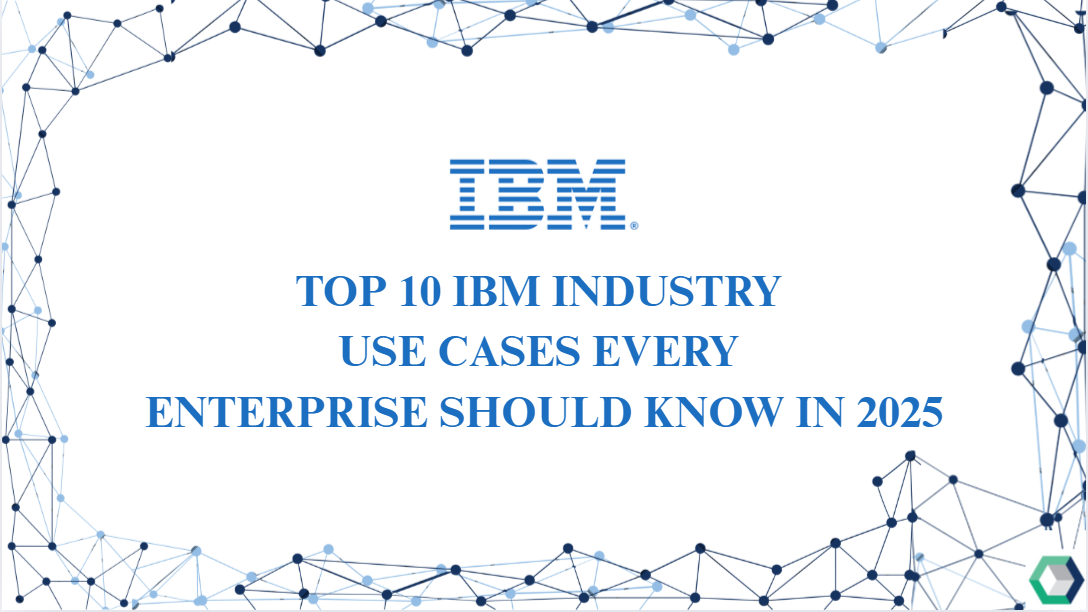Effective workforce planning has become a critical factor in organizational success. As industries evolve and face increasingly complex challenges, traditional approaches to workforce management often fall short. This is where CPLEX and mathematical optimization, also known as mathematical programming, decision optimization, or decision intelligence, come into play. These powerful tools are transforming how businesses across various sectors approach workforce planning, offering innovative solutions to age-old problems.
Healthcare: Balancing Staff and Patient Needs
The healthcare industry faces unique workforce planning challenges, primarily centered around ensuring adequate staffing levels to meet patient needs while managing costs and maintaining quality care. Hospitals and clinics must juggle various factors, including fluctuating patient volumes, diverse skill requirements, and stringent regulatory compliance.
CPLEX and mathematical optimization can address these challenges by creating sophisticated models that account for multiple variables simultaneously. For instance, a hospital can use these tools to optimize nurse scheduling, considering factors such as patient acuity, nurse specialties, shift preferences, and labor laws. The technical aspect involves developing constraint-based models that capture these complex relationships and using CPLEX’s powerful algorithms to find optimal solutions.
From a business perspective, implementing such optimization solutions can lead to significant improvements in patient care quality, staff satisfaction, and operational efficiency. The potential ROI is substantial, with hospitals experience reductions in overtime costs, improved nurse retention rates, and enhanced patient outcomes. In some cases, healthcare providers should see up to 15% reduction in labor costs while simultaneously improving staff satisfaction and patient care metrics.
Manufacturing: Streamlining Production and Workforce Allocation
In the manufacturing sector, workforce planning is intricately tied to production schedules, skill requirements, and demand fluctuations. Companies struggle with aligning their workforce capabilities with production needs while minimizing idle time and overtime costs.
CPLEX and mathematical optimization offer a comprehensive approach to these challenges. By integrating data from production forecasts, employee skills, and resource availability, manufacturers can create models that optimize workforce allocation across different production lines and shifts. The technical implementation might involve mixed-integer programming models that account for various constraints such as machine capacities, worker qualifications, and production deadlines.
From a business standpoint, this approach enables manufacturers to respond more agilely to market demands, reduce labor costs, and improve overall productivity. The ROI can be significant, with some companies see up to 20% improvement in workforce utilization and a 10-15% reduction in overtime expenses. Moreover, optimized workforce planning can lead to faster production cycles and improved on-time delivery performance, enhancing customer satisfaction and competitive advantage.
Retail: Mastering the Art of Staff Scheduling
The retail industry faces the challenge of aligning staffing levels with customer traffic patterns, which can vary greatly by hour, day, and season. Overstaffing leads to unnecessary labor costs, while understaffing results in poor customer service and lost sales opportunities.
CPLEX and mathematical optimization can revolutionize retail workforce planning by creating dynamic staffing models that adapt to changing customer patterns. These models can incorporate historical sales data, promotional events, and even external factors like weather forecasts to predict staffing needs accurately. The technical implementation might involve time series analysis combined with optimization models that balance service level targets with labor budget constraints.
For retailers, the business impact of such optimization can be transformative. Improved scheduling accuracy can lead to better customer service, increased sales, and reduced labor costs. Some retailers should experience up to 5% increase in sales due to improved staffing during peak hours, along with a 10% reduction in overall labor costs. Additionally, more predictable and fair schedules can improve employee satisfaction and reduce turnover, further contributing to long-term business success.
Financial Services: Balancing Skill Sets and Regulatory Compliance
The financial services sector faces unique workforce planning challenges due to the need for specialized skills, strict regulatory requirements, and cyclical business patterns. Banks, insurance companies, and investment firms must ensure they have the right mix of talent to meet client needs while complying with industry regulations.
CPLEX and mathematical optimization can help financial institutions create sophisticated workforce models that account for these complex requirements. For example, an optimization model can be developed to allocate staff across different departments based on forecasted workload, required certifications, and regulatory constraints. The technical implementation might involve multi-objective optimization techniques to balance competing goals such as cost minimization, skill coverage, and risk management.
From a business perspective, optimized workforce planning in financial services can lead to improved operational efficiency, better risk management, and enhanced client service. The potential ROI includes reduced compliance risks, improved productivity, and better utilization of specialized talent. Some financial institutions see up to 25% improvement in workforce efficiency and a significant reduction in regulatory fines due to better staff allocation and skill management.
Need CPLEX Training? Enroll for
Technology and IT Services: Managing a Global, Project-Based Workforce
The technology and IT services industry faces the challenge of managing a highly skilled, often globally distributed workforce across multiple projects with varying timelines and skill requirements. Companies in this sector struggle with optimizing resource allocation, managing bench time, and ensuring the right skills are available for upcoming projects.
CPLEX and mathematical optimization can address these challenges by creating comprehensive resource management models. These models can consider factors such as employee skills, project requirements, geographic locations, and career development goals to optimize staff allocation across projects and time periods. The technical implementation might involve large-scale linear programming models with thousands of variables and constraints, leveraging CPLEX’s advanced solving capabilities.
For technology companies, the business impact of such optimization can be substantial. Improved resource allocation can lead to higher project success rates, reduced bench time, and better utilization of global talent pools. Some companies have seen up to 30% improvement in resource utilization rates and a 20% reduction in project delays due to skill mismatches. Moreover, optimized workforce planning can enhance employee satisfaction by providing more interesting and suitable project assignments, leading to better retention of top talent.
Cresco International: Your Partner in Decision Optimization
As we’ve explored the transformative potential of CPLEX and mathematical optimization across various industries, it’s clear that implementing these solutions requires deep expertise and a tailored approach. This is where Cresco International, an IBM trusted partner and consulting firm specializing in decision optimization and CPLEX, plays a crucial role.
When partnering with Cresco International, businesses can expect a comprehensive approach to implementing workforce planning optimization solutions:
Firstly, our consultants work closely with your team to gain a thorough understanding of your specific workforce planning challenges. We analyze your current processes, data sources, and business goals to identify areas where optimization can drive the most significant improvements.
Next, we leverage our expertise in CPLEX and mathematical modeling to design tailored optimization models that capture the nuances of your business environment. Whether it’s a complex nurse scheduling system for a hospital or a global resource allocation model for an IT services firm, we ensure that every relevant factor is considered in the optimization process.
Our technical team then implements these models using CPLEX’s powerful optimization engine, integrating them with your existing systems and data sources. We pay special attention to creating user-friendly interfaces and reporting tools, ensuring that the optimization results are easily accessible and actionable for your decision-makers.
Throughout the implementation process, we provide comprehensive training and support to your team, ensuring they understand how to use and maintain the optimization system effectively. We also work with you to develop key performance indicators (KPIs) to measure the impact of the optimization solution on your business outcomes.
But our partnership doesn’t end with implementation. Cresco International is committed to long-term client success. We provide ongoing support and optimization of the solution, helping you adapt to changing business conditions and leverage new opportunities for improvement.
By partnering with Cresco International, businesses can accelerate their journey towards more efficient, agile, and intelligent workforce planning. Our clients experience significant improvements in key metrics such as labor cost reduction, employee satisfaction, and operational efficiency. Moreover, the benefits of working with Cresco International extend beyond immediate cost savings and efficiency gains. Our solutions help businesses build long-term competitive advantages by enabling more strategic workforce planning. This can lead to improved customer satisfaction, better ability to respond to market changes, and ultimately, sustainable business growth.
Need CPLEX Training? Enroll for
Conclusion
As we’ve seen throughout this exploration, CPLEX and mathematical optimization are powerful tools that can revolutionize workforce planning across diverse industries. From healthcare to manufacturing, retail to financial services, and technology to IT services, businesses are leveraging these advanced techniques to overcome complex challenges and drive significant improvements in efficiency, cost-effectiveness, and strategic decision-making.
The potential benefits are clear: reduced labor costs, improved employee satisfaction, enhanced customer service, and better alignment of workforce capabilities with business needs. However, realizing these benefits requires more than just implementing a software solution. It demands a strategic approach, deep expertise, and a commitment to data-driven decision-making.
This is where partnerships with experts like Cresco International become invaluable. By combining industry-specific knowledge with technical expertise in CPLEX and mathematical optimization, Cresco International helps businesses unlock the full potential of these powerful tools. As we move into an increasingly complex and dynamic business environment, such partnerships will be crucial in staying competitive and building resilient, adaptive workforces.
The future of workforce planning lies in embracing these advanced optimization techniques. For businesses ready to take this leap, the rewards can be transformative – not just in terms of operational efficiency, but in building agile, responsive organizations capable of thriving in an ever-changing business landscape. As we look to the future, it’s clear that CPLEX and mathematical optimization, guided by expert partners like Cresco International, will play a pivotal role in shaping the workforce strategies of successful businesses across all industries.











